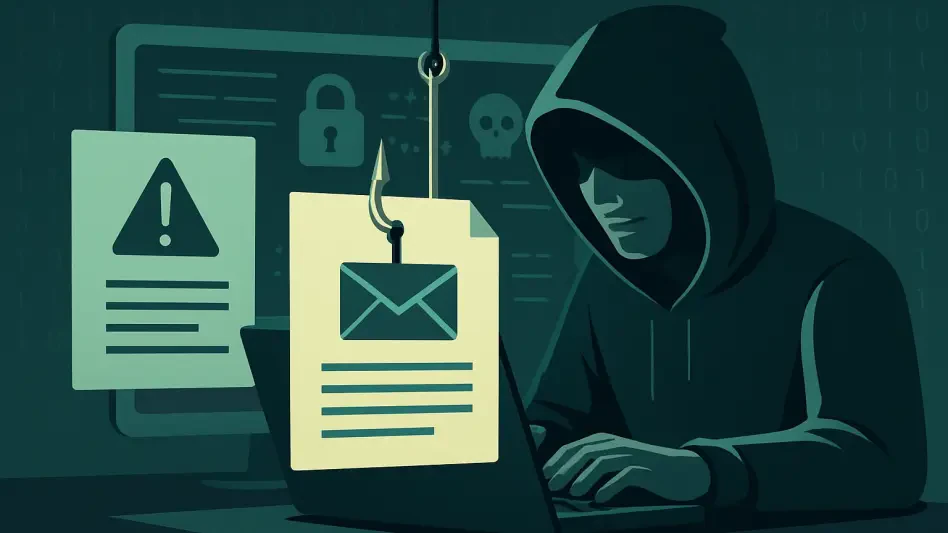In a world where national security systems are under constant siege from both external and internal dangers, the specter of insider threats looms larger than ever before, demanding urgent attention. These risks, often originating from trusted individuals within an organization, have evolved into complex challenges driven by rapid technological advancements and shifting societal dynamics. A striking example is the recent case of Nathan Vilas Laatsch, a Defense Intelligence Agency IT specialist accused of attempting to leak classified information, which has exposed critical flaws in existing safeguards. This incident serves as a wake-up call, highlighting the urgent need to overhaul outdated protective measures. As threats become more sophisticated, federal systems must adapt to prevent catastrophic breaches that could jeopardize national interests. This article delves into the evolving nature of insider risks, the shortcomings of current policies, and the actionable steps required to fortify defenses, ensuring that sensitive systems remain secure in an increasingly unpredictable landscape.
Unraveling the New Dynamics of Insider Risks
The landscape of insider threats has undergone a profound transformation, moving far beyond the simplistic data theft scenarios of the past. High-profile incidents like the WikiLeaks disclosures were once benchmarks for such risks, but today’s challenges are fueled by a volatile mix of technological innovation and societal tensions. Artificial intelligence (AI) has emerged as a double-edged sword, capable of amplifying the scale of data breaches with unprecedented speed. Meanwhile, societal factors such as political polarization can ignite ideological motivations for betrayal, as potentially evidenced in the Laatsch case, where dissatisfaction may have played a pivotal role. This intricate web of modern influences demands a reevaluation of how threats are detected and mitigated, pushing for strategies that account for both digital and human elements. Without adapting to these new realities, national security systems remain dangerously exposed to exploitation by those within their own ranks.
Moreover, the methods employed by insiders have become alarmingly diverse, blending high-tech tools with deceptively simple tactics. While AI and other advanced technologies enable rapid data exfiltration, low-tech approaches, such as the handwritten notes allegedly used by Laatsch, can bypass conventional monitoring systems focused on digital footprints. This duality in tactics reveals a significant blind spot in current defenses, which often prioritize overt policy violations over subtle anomalies. The ability of insiders to exploit both sophisticated and rudimentary means underscores the necessity for a broader, more nuanced approach to threat detection. Federal agencies must integrate systems capable of identifying a wide spectrum of suspicious activities, ensuring that neither cutting-edge nor traditional methods of compromise go unnoticed. Addressing this evolving challenge is not merely a technical issue but a fundamental requirement for safeguarding critical information in today’s complex environment.
Exposing Gaps in Current Protective Frameworks
Despite the existence of established guidelines like the Committee on National Security Systems Directive 504 (CNSSD 504), significant vulnerabilities persist in the defense against insider threats. When introduced, CNSSD 504 offered forward-thinking measures such as anomaly detection and behavioral baselining to identify potential risks in classified environments. However, the optional nature of much of this guidance has proven to be a critical weakness. The case involving Laatsch, where behavioral warning signs reportedly went unheeded, demonstrates how non-mandatory protocols fail to provide the robust protection needed in high-stakes settings. This gap allows insiders with access to sensitive systems to operate undetected for extended periods, posing a severe risk to national security. Strengthening these frameworks by converting optional recommendations into strict requirements is essential to close loopholes that threaten the integrity of federal operations.
Additionally, ambiguity within existing policies further undermines their effectiveness in countering insider risks. Terms like “file shadowing” in CNSSD 504 lack precise definitions, hampering efforts to track file access and modifications comprehensively. This vagueness limits the ability of agencies to connect user activities with potential threats, creating missed opportunities for early intervention. The Laatsch incident exemplifies how such unclear guidelines can result in delayed responses to suspicious behavior, even when indicators are present. To address this, policies must be revised to include clear, enforceable standards that leave no room for misinterpretation. By establishing detailed mandates for tracking and monitoring, federal systems can better anticipate and neutralize risks before they escalate. Modernizing these frameworks is a crucial step toward ensuring that protective measures align with the sophisticated nature of today’s insider threats.
Forging a Path to Stronger Defenses
To confront the escalating risks posed by insiders, immediate action must focus on integrating proven technologies into mandatory protocols. Tools like anomaly detection and behavioral baselining have shown effectiveness in identifying subtle deviations in user behavior, which could have flagged issues in cases like Laatsch’s much earlier. Making such technologies non-negotiable across federal systems would create a proactive line of defense against potential breaches. Furthermore, refining ambiguous concepts like file shadowing to encompass detailed tracking of access and modifications can significantly enhance investigative capabilities. By capturing a clearer picture of user interactions with sensitive data, agencies can detect and respond to irregularities with greater precision. Implementing these technological advancements as standard practice is a vital move toward fortifying national security against internal vulnerabilities.
Equally important is the expansion of protective measures to encompass unclassified networks, which often contain sensitive information vulnerable to aggregation risks. Extending policies similar to Executive Order 13587 to cover these systems addresses a long-standing oversight in current frameworks. Additionally, leveraging data-driven solutions like User Entity Behavior Analytics (UEBA) can help prioritize risks in vast federal environments where human oversight alone falls short. This approach allows for efficient allocation of resources, focusing attention on the most pressing threats. By combining advanced analytics with comprehensive policy updates, agencies can build a scalable and resilient defense mechanism. These steps not only mitigate the immediate dangers posed by insider threats but also lay the groundwork for a more secure future, ensuring that national systems are equipped to handle the complexities of an ever-evolving risk landscape.
Building on Past Lessons for Future Security
Reflecting on the insights gained from past incidents, it’s evident that the journey to modernize insider threat protections has been marked by both progress and persistent challenges. Cases like that of Nathan Vilas Laatsch serve as stark reminders of how even trusted insiders can exploit systemic weaknesses when policies lag behind emerging risks. The limitations of frameworks such as CNSSD 504, with their optional guidelines and ambiguous terms, have exposed critical gaps that demand urgent attention. Discussions around mandating technologies like anomaly detection and behavioral baselining have gained traction as essential responses to these vulnerabilities. Moreover, the push to extend safeguards to unclassified networks has highlighted a previously under-addressed area of concern. These lessons from recent history underscore the importance of aligning protective measures with the sophisticated tactics employed by modern insiders, setting a precedent for proactive reform in national security practices.
Looking ahead, the focus must shift to actionable implementation of the solutions identified in past analyses. Leadership should prioritize the integration of advanced tools like User Entity Behavior Analytics (UEBA) to enhance risk prioritization across sprawling federal systems. Clarifying and enforcing precise requirements for tracking mechanisms, such as file shadowing, will empower agencies to detect suspicious activities with greater accuracy. Additionally, expanding the scope of protective policies to cover unclassified data remains a critical next step to eliminate blind spots. By building on the foundation of past experiences, federal entities can establish a dynamic and comprehensive defense strategy. These efforts will not only address the immediate threats posed by insiders but also ensure that national security systems remain resilient against future challenges, safeguarding vital interests in an increasingly complex digital era.








